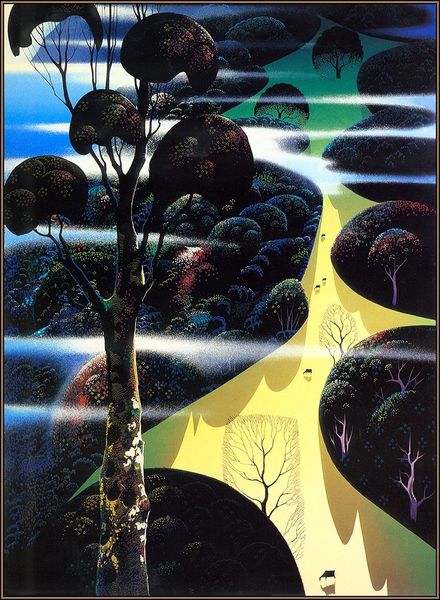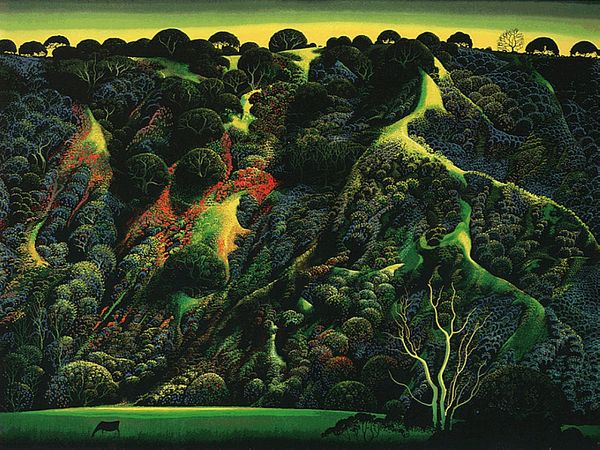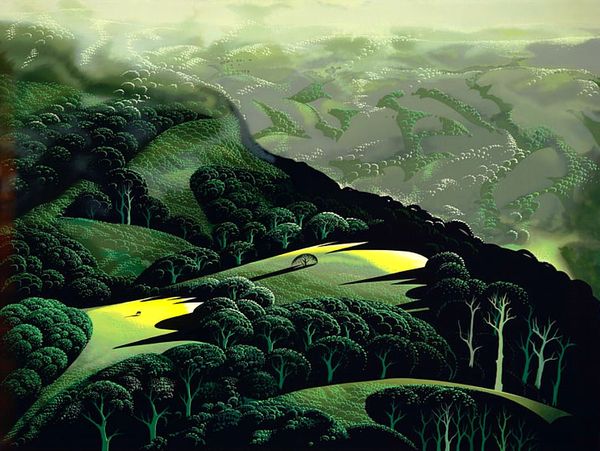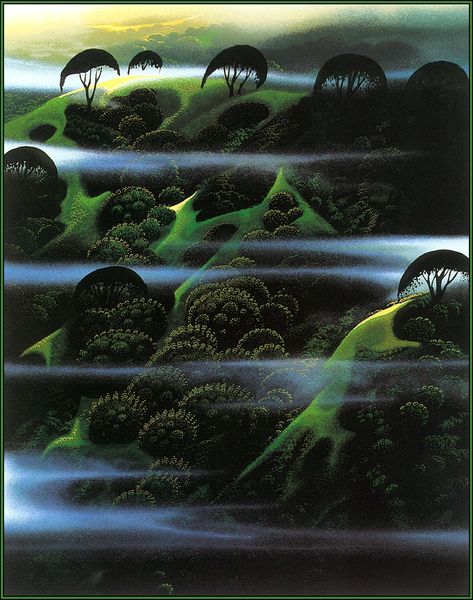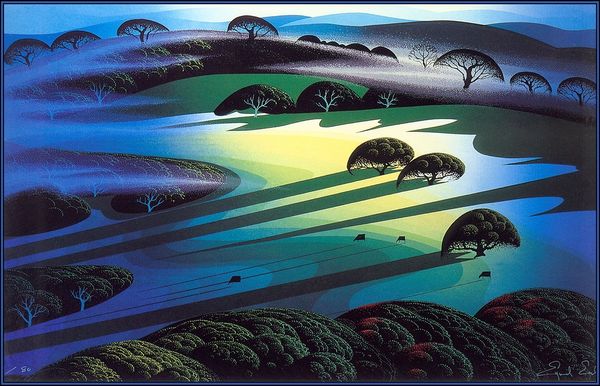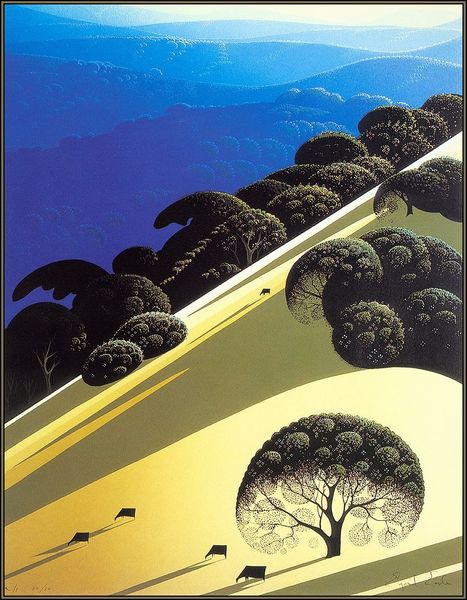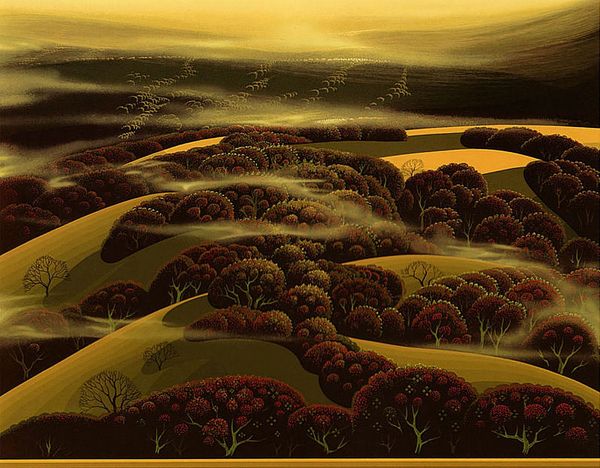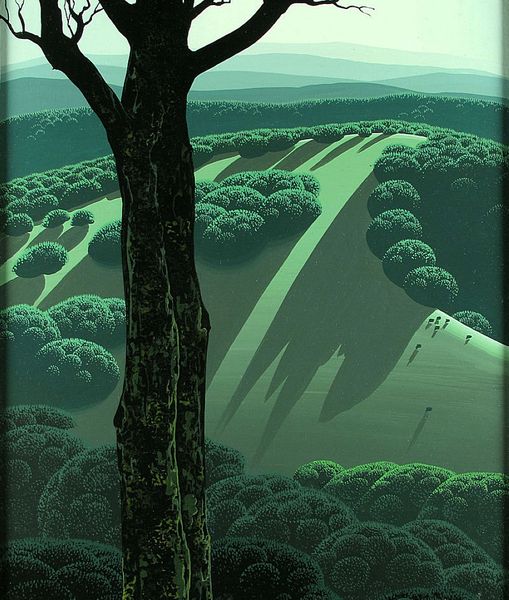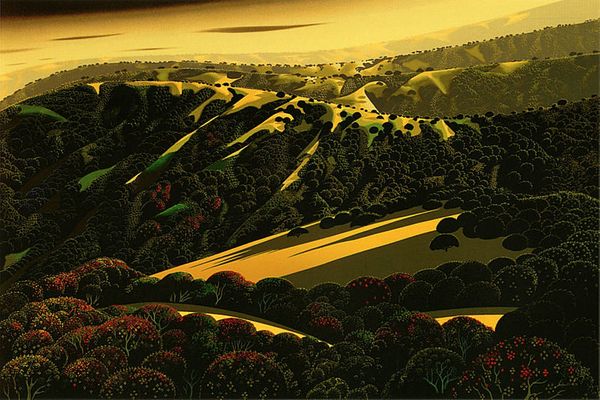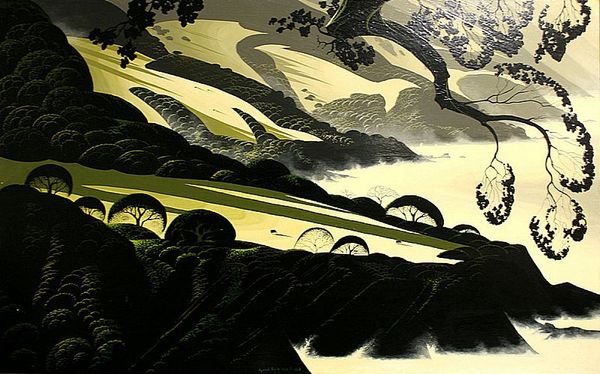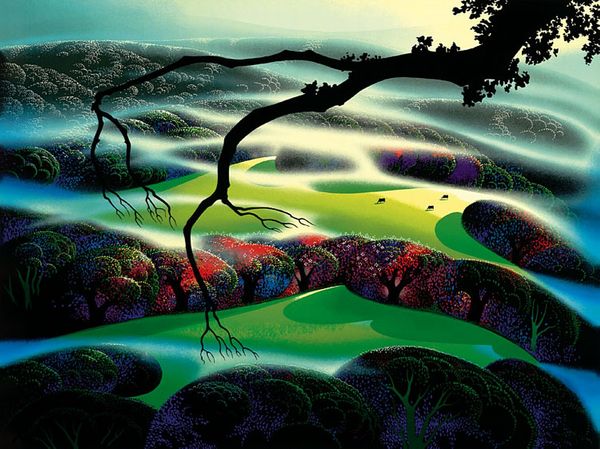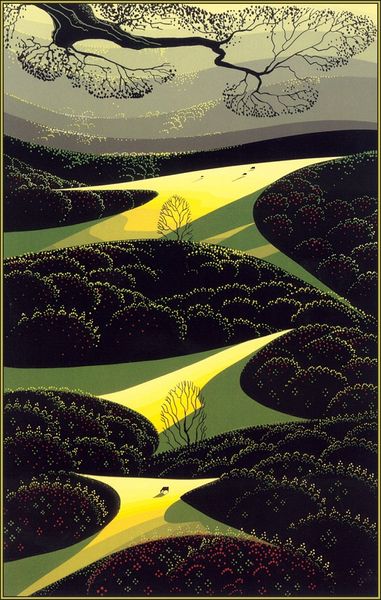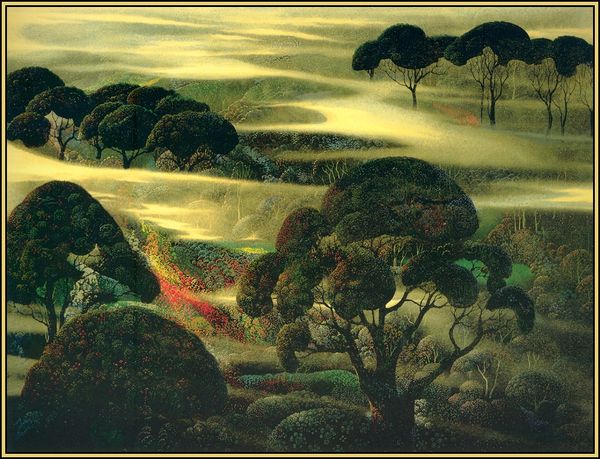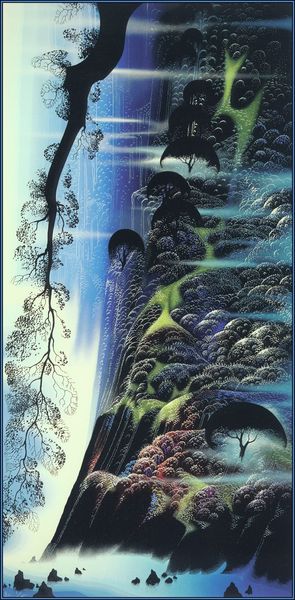
Copyright: Eyvind Earle,Fair Use
Curator: Looking at Eyvind Earle's "Fog Draped Hills" from 1990, an acrylic painting, I'm immediately struck by this sense of serene drama. What do you think? Editor: Serene is a loaded term, right? At first glance, sure, the colours are muted and cool. But look closer – this isn't your typical bucolic landscape painting. There's a definite hierarchy present. The darkened hills seem to loom over a bright pasture, a scene suggesting uneven distribution of land, capital, and labour. Curator: Interesting. For me, that hierarchy adds to the painting's sense of depth. I mean, look at the almost geometric shapes in those rolling hills, draped in mist. And those perfectly rounded trees – they remind me of little planets! It’s like a dreamy, almost surreal world. I can feel that thin crisp air. Editor: That surrealism feels quite calculated though. Landscapes have historically been deployed to evoke national identity, but also to mask colonial violence and exploitation. Think of how these romanticised depictions of land are intertwined with ownership, exclusion, and the erasure of Indigenous presence. Is it "serene" or complicit? Curator: Hmm, that's a valid point. The painting's idealism could be seen as overlooking the darker sides of land ownership and historical context. It still inspires me though! It feels to me to have almost a stage set with hidden figures within the rolling hills. Do you think the painting is maybe trying to inspire a sense of yearning for nature as some form of retreat from real and daily issues? Editor: Definitely a yearning – but yearning for what? Is it a nostalgic escape from the social inequalities perpetuated within those idealized spaces? Or is it highlighting a need to redistribute and decolonise these stolen resources? And for whom are these landscapes made? Were rural subjects ever part of the target viewership or did the pastoral imagery largely serve to romanticize leisure for burgeoning city dwellers? I would guess it is the latter! Curator: These hills hold more weight than I initially realised. I wonder how Earle himself would have felt about our debate on exploitation, especially as it contrasts with his clear attempt to create something beautiful, even otherworldly, on canvas. Editor: That's precisely why these dialogues are important, right? To question not just the "beauty" we’re presented with, but the context it was made in and what that seemingly perfect landscape really masks and supports.
Comments
No comments
Be the first to comment and join the conversation on the ultimate creative platform.
